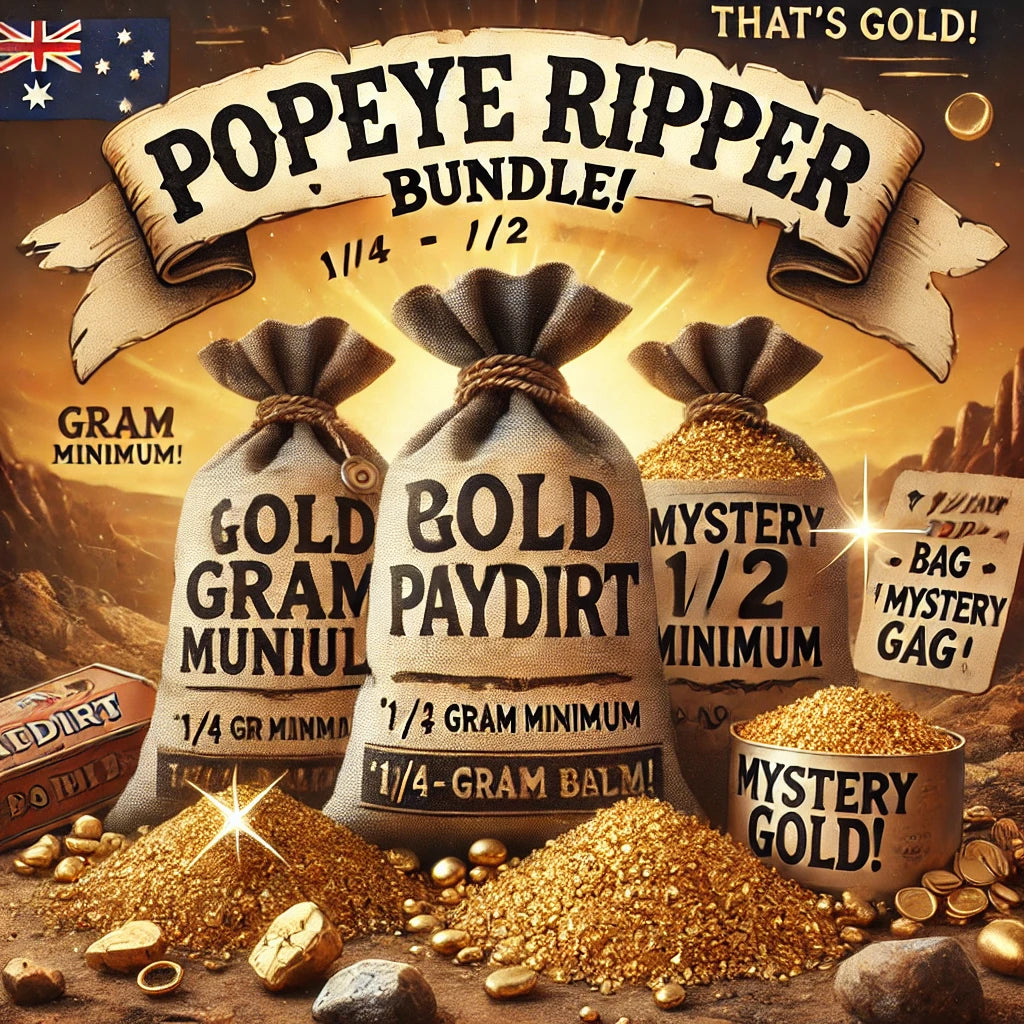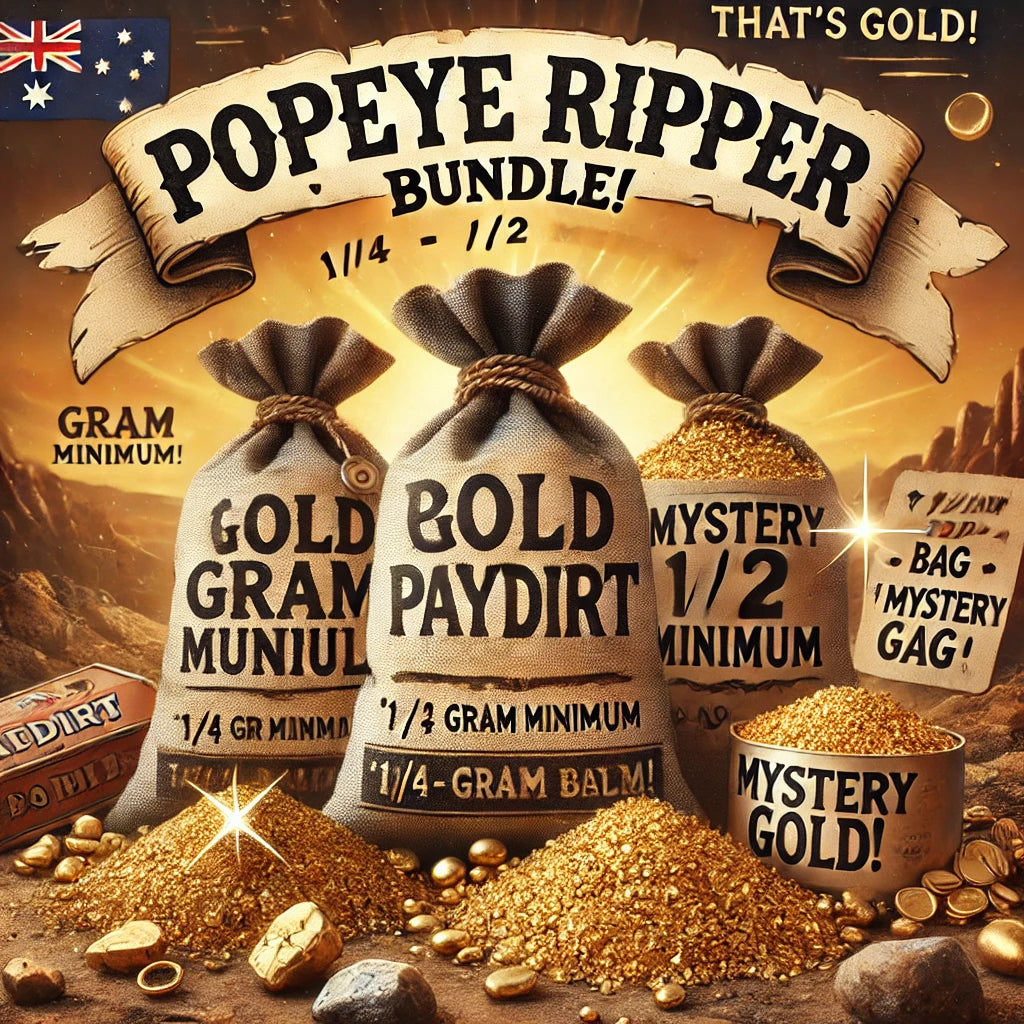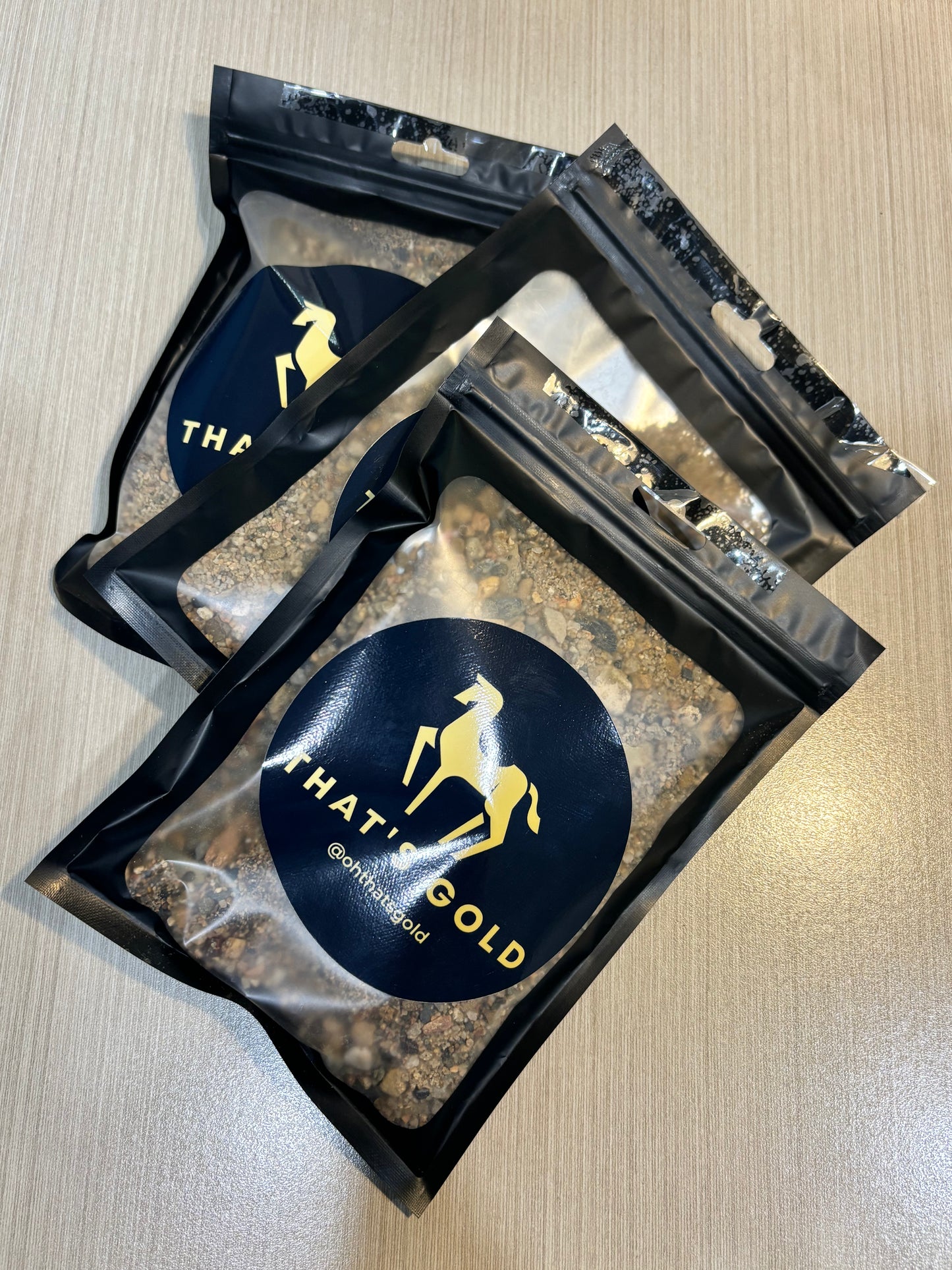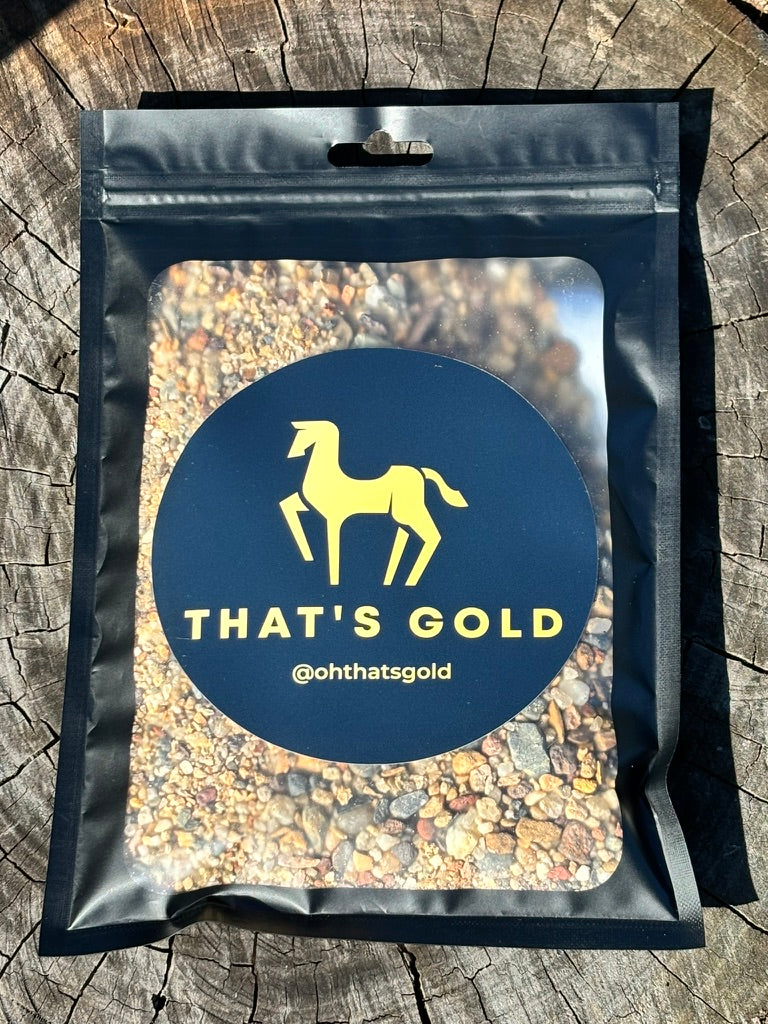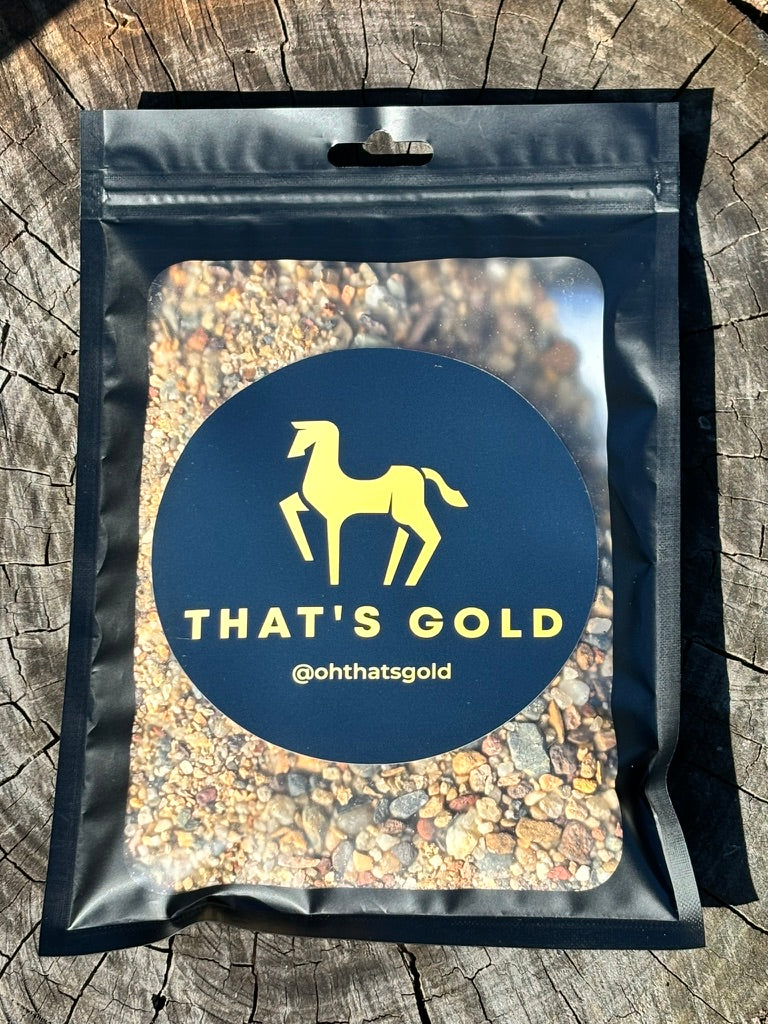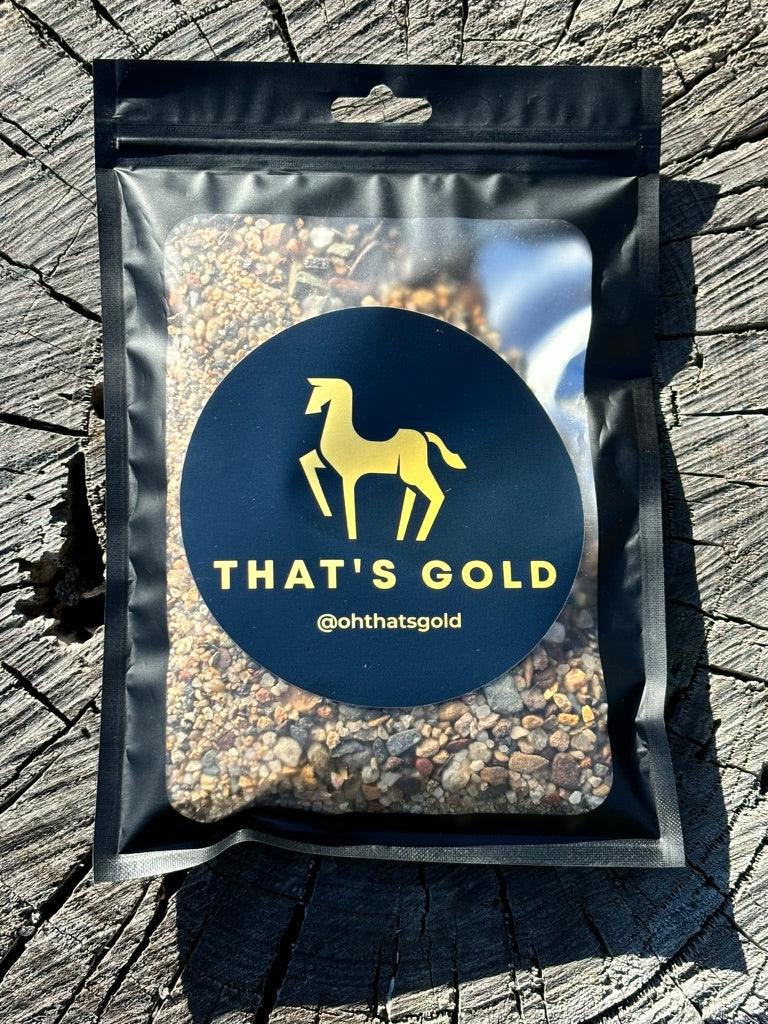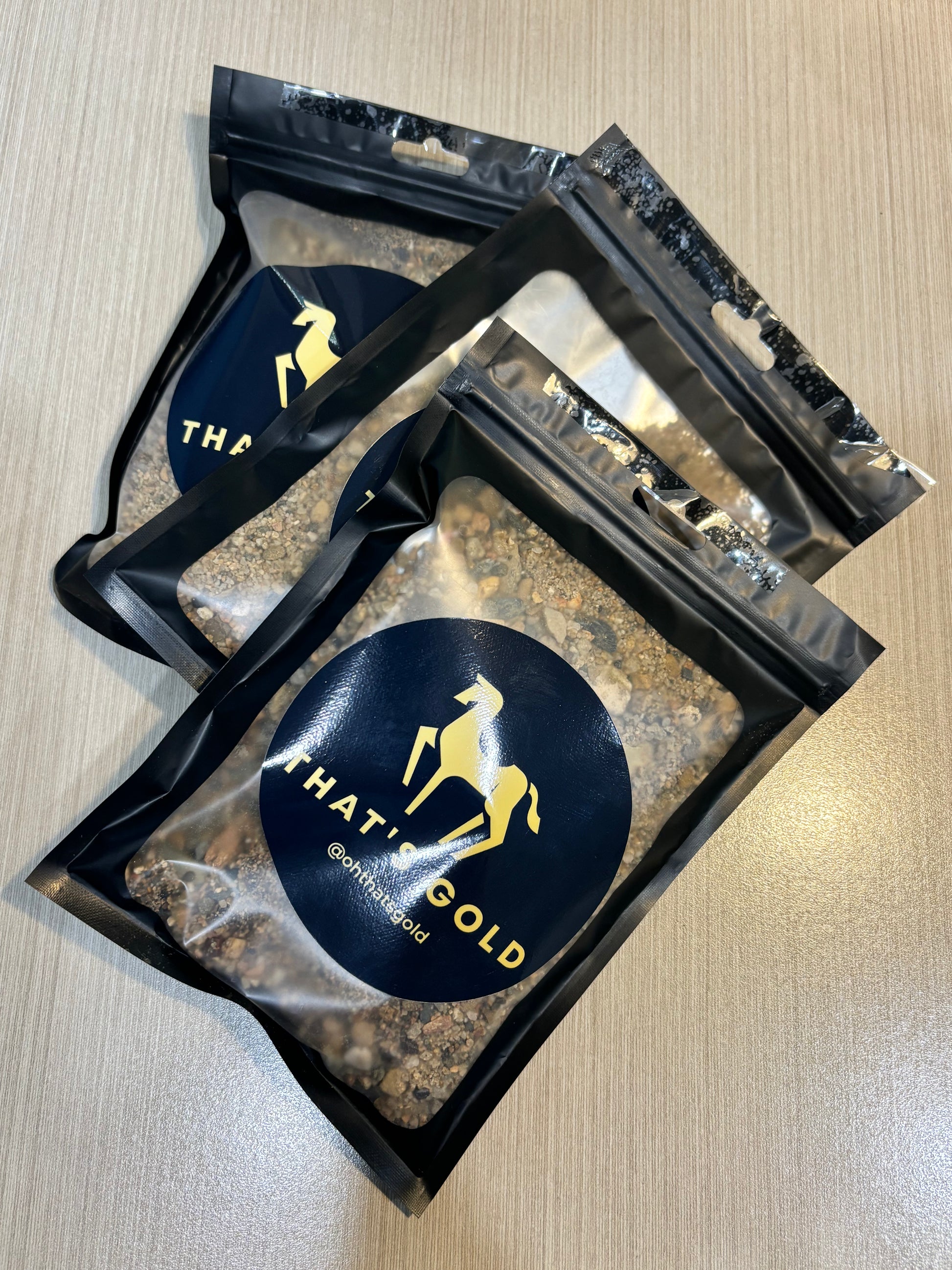Gold paydirt offers aspiring prospectors a chance to experience the thrill of gold panning without the need for extensive exploration. This specially prepared material contains real gold particles, allowing enthusiasts to hone their panning skills and potentially uncover valuable nuggets.

When selecting gold paydirt, it's crucial to choose reputable suppliers who guarantee a minimum gold content and provide accurate information about the origin of their material.
Prospectors should consider factors such as the mesh size, which affects the ease of processing, and the type of gold present, whether it's fine dust or larger flakes.
For beginners, paydirt from well-known gold-bearing regions like the Victorian goldfields can be an excellent starting point.
More experienced panners might opt for concentrates from remote areas, which can yield higher-grade gold.
Regardless of the choice, purchasing gold paydirt can be an exciting way to engage in prospecting and potentially strike it lucky.
What Is Gold Paydirt?

Gold paydirt is a raw material containing gold that prospectors and hobbyists can purchase to pan or sluice for gold at home. It offers an accessible way to experience gold prospecting without travelling to gold-bearing areas.
Defining Paydirt
Paydirt refers to dirt, sand, or gravel that contains valuable minerals, particularly gold. In the context of recreational gold panning, paydirt is material sourced from gold-rich areas and sold to enthusiasts.
This pre-screened material typically contains small amounts of gold, ranging from fine dust to larger nuggets.
Paydirt allows individuals to practise gold panning techniques and potentially recover precious metals without the need for specialised equipment or travel. It's popular among beginners learning gold recovery methods and experienced prospectors honing their skills.
The Source of Paydirt
Paydirt originates from various gold-bearing locations, including active and historical mining sites. Suppliers often collect material from riverbeds, creek banks, and placer deposits known for their gold content.
Some paydirt comes directly from working mines, where it's a byproduct of larger-scale gold extraction operations.
Other sources include tailings from old mining sites, which may still contain gold missed by earlier processing methods.
Reputable sellers often specify the origin of their paydirt, which can include famous gold-producing regions like the Victorian goldfields in Australia or the Yukon in Canada.
Common Paydirt Contents
While gold is the primary target, paydirt often contains a mix of other minerals and materials. These may include:
- Fine gold flakes and dust
- Small gold nuggets (in premium paydirt)
- Black sand (magnetite and other heavy minerals)
- Garnets and other semi-precious stones
- Quartz and various rock fragments
Silver may also be present in some paydirt, especially if sourced from areas known for silver deposits.
The exact composition varies depending on the source location and how the paydirt is processed before sale.
Concentrates, a more refined form of paydirt, have most of the lighter materials removed, leaving a higher concentration of heavy minerals, including gold.
Benefits of Buying Gold Paydirt

Purchasing gold paydirt offers several advantages for prospectors and hobbyists alike. It provides opportunities to hone panning techniques, offers convenient access to gold-bearing material, and holds the potential for valuable discoveries.
Improving Panning Skills
Gold paydirt serves as an excellent training ground for novice prospectors.
By practising with pre-screened material, beginners can refine their panning techniques without the frustration of unproductive digs.
The controlled environment allows for focused learning, helping panners develop a keen eye for spotting gold flakes and nuggets.
Experienced prospectors can also benefit from paydirt. It provides a consistent supply of material to maintain their skills during off-seasons or when unable to visit actual gold-bearing sites.
Regular practice with paydirt keeps techniques sharp and reflexes honed.
Some suppliers offer paydirt with varying levels of difficulty, allowing panners to progressively challenge themselves. This graduated approach helps build confidence and expertise over time.
Convenience and Accessibility
Gold paydirt brings the thrill of prospecting to your doorstep.
It eliminates the need for extensive travel, equipment, and permits often required for on-site gold panning.
This accessibility makes gold panning available to a wider audience, including those with limited mobility or time constraints.
Urban dwellers can enjoy the hobby without leaving their homes. A simple setup in the backyard or even indoors allows for year-round panning activities.
This convenience factor has contributed to the growing popularity of paydirt among gold enthusiasts.
Paydirt also offers a safer alternative to traditional prospecting. It removes the risks associated with remote locations, unstable terrain, and unpredictable weather conditions.
Potential for Discovering Valuables
While not guaranteed, the possibility of finding gold in paydirt adds an element of excitement to the hobby.
Reputable suppliers often provide paydirt from known gold-bearing regions, increasing the chances of successful finds.
Some paydirt packages come with guarantees of gold content, offering a baseline expectation for buyers.
This assurance can be particularly appealing for those new to the hobby or looking for a reliable gold panning experience.
Beyond gold, paydirt may contain other valuable minerals or gemstones. These unexpected discoveries can add an extra layer of intrigue to the panning process.
Some enthusiasts have reported finding small sapphires, garnets, or even rare earth elements in their paydirt.
Types of Paydirt Available
Gold paydirt comes in various forms, each offering unique opportunities for prospectors. The type of paydirt you choose can significantly impact your gold recovery success and overall experience.
Unsearched versus Processed Paydirt
Unsearched paydirt offers the thrill of raw exploration. These bags contain material straight from gold-rich areas, untouched by other prospectors. The gold content can vary widely, but the potential for finding sizeable nuggets is higher.
Processed paydirt undergoes initial screening to remove larger rocks and debris.
This type is often more consistent in gold content but may have fewer large nuggets. Some sellers guarantee a minimum amount of gold per bag, providing a measure of certainty for buyers.
Both types have their merits. Unsearched paydirt suits those seeking an authentic prospecting experience, while processed paydirt may appeal to hobbyists looking for a more predictable yield.
Variety Based on Gold Purity and Content
Paydirt bags vary in gold purity and content. Some contain primarily fine gold dust, while others might include small flakes or even nuggets. Purity can range from 14k to 24k, with higher karat gold being more valuable.
Sellers often specify the expected gold content in their paydirt:
- Low yield: 0.1-0.5 grams per kg
- Medium yield: 0.5-1 gram per kg
- High yield: 1+ grams per kg
Buyers should consider their goals when selecting paydirt. Those seeking quantity might opt for bags with more fine gold, while others may prefer the chance of finding larger pieces.
Specialised Bags Containing Precious Metals
Some paydirt suppliers offer specialised bags containing a mix of precious metals. These may include:
- Gold and silver combinations
- Platinum group metals
- Rare earth elements
These bags cater to collectors interested in a diverse range of valuable materials. While gold remains the primary focus, the presence of other metals can add excitement to the panning process.
Specialised bags might also contain gems or minerals associated with gold deposits. This variety appeals to rockhounds and those interested in geology alongside gold prospecting.
How to Choose Quality Paydirt

Selecting high-quality gold paydirt requires careful consideration of seller reputation, product reviews, and key quality factors. Informed decisions lead to more rewarding gold prospecting experiences.
Reading and Understanding Reviews
Customer reviews offer valuable insights into paydirt quality.
Look for detailed accounts of gold found, including quantities and sizes. Pay attention to comments about the cleanliness of the material and ease of processing.
Be wary of overly positive reviews with little substance, as these may be misleading.
Compare reviews across multiple sources to get a balanced perspective.
Some prospectors share their paydirt results on forums or video platforms, providing visual evidence of their finds. These can be particularly helpful in setting realistic expectations.
Identifying Reputable Sellers
Established sellers with a strong track record are more likely to provide consistent, quality paydirt.
Research the seller's background and experience in gold prospecting. Look for sellers who are transparent about their sourcing methods and locations.
Check if the seller offers guarantees or return policies.
Reputable sellers often provide assurances of minimum gold content. Be cautious of sellers making extravagant claims about gold yields.
Consider sellers who specialise in paydirt from known gold-bearing regions.
Factors Determining Quality
The origin of the paydirt is crucial. Material from established gold-bearing regions, such as certain parts of Western Australia, tends to yield better results.
The method of extraction also impacts quality. Paydirt obtained through careful prospecting often contains more gold than bulk-processed material.
Particle size distribution is important. A mix of fine and coarse material can indicate a more natural, less-processed product.
The presence of black sand and other heavy minerals is generally a good sign, as gold is often found in association with these materials.
Consider the stated gold content. While not always accurate, it provides a baseline expectation.
Some sellers use Poseidon lead to verify gold content, which can add credibility to their claims.
Tools and Techniques for Gold Panning
Successful gold panning requires the right equipment and proper techniques. Mastering these elements can significantly improve your chances of finding gold in paydirt.
Essential Equipment for Panning
A sturdy gold pan is the cornerstone of any panner's kit. Choose a pan made of durable plastic or metal, with deep riffles to trap gold particles.
A classifier sieve helps sort material before panning, improving efficiency.
Snuffer bottles are crucial for collecting fine gold. A magnet aids in removing magnetic black sand. Tweezers allow for precise handling of small gold flakes.
Protective gear is vital. Wear waterproof boots and gloves to stay dry and comfortable. A wide-brimmed hat and sunscreen shield you from the sun during long panning sessions.
Advanced Panning Techniques
Proper panning technique is essential for gold recovery. Start by filling your pan with classified material and submerge it in water.
Tilt the pan away from your body at a 45-degree angle.
Use circular motions to agitate the material, allowing heavier gold to settle. Gradually wash away lighter sediments, tilting the pan forward slightly with each movement.
As you near the end, reduce the circular motion and use a gentle back-and-forth motion. This helps concentrate the gold at the bottom edge of the pan.
Maximising Gold Recovery
To maximise gold recovery, focus on reading the stream bed. Look for natural traps where gold might accumulate, such as cracks in bedrock or behind large boulders.
Test multiple locations within your chosen area. Gold distribution can be uneven, so don't give up if your first few pans yield little.
Consider using a sluice box alongside your pan for processing larger volumes of material. This can significantly increase your gold recovery rate.
Patience and persistence are key. Refine your technique through practice, and you'll become more adept at spotting even the tiniest gold flakes.
Where to Buy Quality Paydirt
Finding trustworthy paydirt sellers is crucial for successful gold panning. Savvy buyers can leverage discounts and loyalty programs to get better deals. The choice between online and physical shops depends on individual preferences and circumstances.
Locating Reputable Paydirt Merchants
Reputable paydirt sellers are essential for a rewarding gold panning experience. Look for merchants with positive customer reviews and a history of reliable service. Established sellers often provide detailed information about their paydirt's origin and potential gold content.
Check if the seller offers a guarantee or return policy. This can be a sign of confidence in their product quality.
Some reputable sellers even provide assay reports or video demonstrations of their paydirt being panned.
Experienced gold panners often recommend joining online forums or local prospecting clubs. These communities can offer valuable insights and recommendations for trustworthy paydirt sources.
Leveraging Discounts and Tokens
Smart buyers can save money by taking advantage of discounts and loyalty programs. Many paydirt sellers offer seasonal sales or bulk purchase discounts. Sign up for newsletters to stay informed about upcoming promotions.
Some online stores use a token system, like Miners Den tokens, which can be collected and redeemed for future purchases. These loyalty programs can lead to significant savings over time.
Look out for bundle deals that combine paydirt with panning equipment. These packages can offer good value, especially for beginners. First-time buyer discounts are also common, so check if sellers offer special rates for new customers.
Online Stores Versus Physical Shops
Online stores often have a wider selection of paydirt from various locations. They typically offer detailed product descriptions and customer reviews, making it easier to compare options. Shipping costs should be factored into the overall price when buying online.
Physical shops allow buyers to inspect the paydirt before purchase. This can be particularly helpful for those new to gold panning.
Local stores may also offer fresh, locally sourced paydirt and personalised advice.
Some buyers prefer a mix of both options. They might purchase bulk orders online for better prices, while visiting physical shops for smaller, speciality batches or equipment.
Consider factors like convenience, shipping costs, and the desire for immediate possession when choosing between online and physical stores.
Victoria's Golden Triangle and Its Significance
Victoria's Golden Triangle represents one of Australia's most prolific gold-bearing regions. This area has shaped the state's mining history and continues to influence the quality of gold paydirt available today.
History and Importance
The Golden Triangle encompasses the towns of Bendigo, Ballarat, and Stawell in central Victoria. Gold was first discovered here in 1851, sparking a major gold rush that transformed the region.
Thousands of prospectors flocked to the area, establishing bustling mining towns almost overnight.
The Triangle's rich alluvial and reef gold deposits yielded massive quantities of gold. Bendigo's mines alone produced over 700 tonnes of gold between 1851 and 1954.
This incredible wealth fuelled Victoria's rapid economic growth and development in the 19th century.
Today, several working mines still operate in the Golden Triangle. These modern operations use advanced techniques to extract gold from deeper, more complex deposits.
Impact on Paydirt Quality
The Golden Triangle's geological features contribute to the exceptional quality of gold paydirt from this region. The area's ancient rock formations have undergone extensive weathering, concentrating gold in alluvial deposits.
Paydirt from the Golden Triangle often contains a mix of fine gold dust and larger nuggets. This variety makes it popular among recreational prospectors and gold panning enthusiasts.
The gold content can be quite high, with some premium paydirts yielding several grams per kilogram of material.
Many paydirt suppliers source their product from active claims within the Golden Triangle. This ensures a steady supply of fresh, unprocessed material with good gold content.
Authentication and Value of Tokens

Tokens in gold paydirt represent potential value and authenticity. Understanding how to differentiate between token types and determine their worth is crucial for prospectors.
Differentiating Between Token Types
Gold tokens are typically small, irregularly shaped pieces with a distinct yellow colour. They may have a dull or shiny appearance depending on their purity.
Silver tokens appear whitish or greyish and are often more rounded. Bronze tokens have a reddish-brown hue and can be mistaken for gold by inexperienced prospectors.
To distinguish between token types, use a magnifying glass to examine their colour and texture closely.
Gold tokens are denser than other metals, so they'll feel heavier for their size. A simple streak test on unglazed ceramic can help identify gold tokens, as they leave a golden streak.
Determining the Value of Tokens
The value of tokens in paydirt depends on several factors:
- Purity: Higher karat gold is more valuable.
- Weight: Measured in grams or troy ounces.
- Current market price of gold.
To assess token value:
- Use a digital scale to weigh the tokens accurately.
- Test the purity with an electronic gold tester or acid test kit.
- Check the daily gold spot price.
Multiply the weight by the purity percentage and current gold price to estimate value.
For example, a 1-gram token of 22-karat gold (91.7% pure) at AUD $100 per gram would be worth about AUD $91.70.
Remember, pay dirt may contain a mix of gold, silver, and bronze tokens. Accurately identifying and valuing each type ensures a fair assessment of your paydirt's worth.

